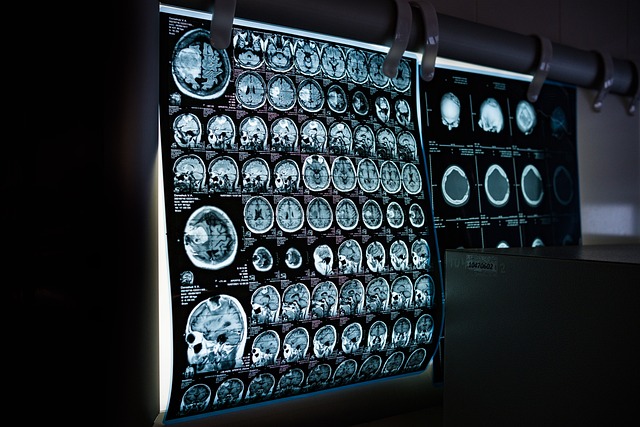Comprehensive Approaches to ALS Treatment and Management
Amyotrophic Lateral Sclerosis (ALS) treatment involves a multifaceted approach combining FDA-approved medications, specialized therapy, respiratory support, and emerging clinical interventions. While there is currently no cure, modern treatment strategies focus on slowing disease progression, managing symptoms, and maintaining quality of life through coordinated multidisciplinary care.

Amyotrophic Lateral Sclerosis (ALS), also known as Lou Gehrig’s disease, is a progressive neurodegenerative condition that affects nerve cells in the brain and spinal cord. While there is currently no cure for ALS, treatment approaches have evolved significantly to help manage symptoms, potentially slow disease progression, and improve quality of life for patients. Modern ALS management involves a comprehensive strategy that includes medications, specialized therapies, assistive technologies, and supportive care delivered through coordinated multidisciplinary teams.
FDA-Approved Medications for Slowing ALS Progression
The pharmaceutical approach to ALS treatment centers on medications specifically approved to potentially slow disease progression. Riluzole (Rilutek) was the first FDA-approved medication for ALS in 1995 and remains a cornerstone of treatment. This medication works by reducing glutamate levels in the brain, which may be elevated in ALS patients and contribute to motor neuron damage. Clinical studies indicate that riluzole may extend survival by approximately 2-3 months on average.
More recently, edaravone (Radicava) received FDA approval in 2017 after studies showed it could help slow the decline in daily functioning for some ALS patients. Administered intravenously, edaravone acts as a free radical scavenger that may protect nerve cells from oxidative stress damage. In 2022, an oral formulation of edaravone was also approved, providing a more convenient administration option for patients.
In 2022, the FDA approved sodium phenylbutyrate and taurursodiol (Relyvrio), which works through different mechanisms to potentially slow ALS progression. This combination therapy targets pathways involved in cellular stress that contribute to motor neuron death. Clinical trials demonstrated modest benefits in functional decline and survival.
Benefits of Multidisciplinary ALS Care
The complex nature of ALS necessitates a coordinated approach involving multiple healthcare specialists working together. Multidisciplinary ALS care typically includes neurologists, pulmonologists, physical and occupational therapists, speech-language pathologists, nutritionists, social workers, and palliative care specialists, all collaborating to address various aspects of the disease.
Research consistently demonstrates that patients who receive care at specialized ALS centers with multidisciplinary teams experience better outcomes, including longer survival times and improved quality of life. These centers provide comprehensive evaluations, coordinated treatment plans, and regular monitoring to address changing symptoms and needs as the disease progresses.
The multidisciplinary approach ensures that symptom management strategies evolve with disease progression. For example, as swallowing difficulties emerge, speech therapists and nutritionists collaborate to maintain nutrition and hydration, potentially recommending feeding tube placement at the appropriate time. Similarly, respiratory specialists work closely with neurologists to monitor breathing function and implement supportive measures before respiratory crises occur.
Physical Therapy & Exercise for ALS Mobility
Contrary to earlier beliefs that exercise might accelerate muscle deterioration in ALS, current evidence suggests that appropriate physical activity can be beneficial. Physical therapy plays a crucial role in maintaining mobility, preventing complications, and enhancing quality of life for ALS patients.
Customized exercise programs focus on maintaining strength in unaffected or minimally affected muscles while avoiding overexertion. Range-of-motion exercises help prevent painful contractures and maintain joint flexibility. Aquatic therapy can be particularly beneficial as water provides buoyancy that makes movement easier while offering gentle resistance.
Occupational therapists work alongside physical therapists to adapt daily activities and environments to maintain independence. This includes recommending assistive devices like braces, walkers, wheelchairs, and transfer equipment as needs change. Energy conservation techniques are also taught to help patients manage fatigue and maximize function throughout the day.
Respiratory Support Techniques for ALS
Respiratory compromise is a significant concern in ALS as the disease affects the muscles involved in breathing. Proactive respiratory management is essential for extending survival and maintaining quality of life. Regular pulmonary function tests help monitor breathing capacity and determine when interventions are needed.
Non-invasive ventilation (NIV), typically delivered through bi-level positive airway pressure (BiPAP) devices, is often introduced when breathing tests show decreased function or when patients experience symptoms like morning headaches, daytime fatigue, or disturbed sleep. NIV can significantly extend survival, improve sleep quality, and alleviate symptoms of respiratory insufficiency.
Airway clearance techniques and devices help manage secretions when coughing becomes ineffective. These include mechanical insufflation-exsufflation devices, manual assisted coughing techniques, and suctioning equipment. For some patients, a tracheostomy with mechanical ventilation may be considered as the disease progresses, though this decision involves careful discussion of goals of care and quality of life considerations.
Emerging ALS Treatments and Clinical Trials
The landscape of ALS treatment continues to evolve with numerous promising approaches under investigation. Gene therapy represents one of the most exciting frontiers, particularly for patients with genetic forms of ALS. These therapies aim to correct or compensate for genetic mutations associated with the disease, with several clinical trials currently underway.
Stem cell therapy approaches are being explored to potentially replace damaged motor neurons or provide supportive factors that could protect remaining neurons. While still experimental, early-phase clinical trials have demonstrated safety, with ongoing research investigating efficacy.
Immunomodulatory treatments target inflammation and immune system dysfunction that may contribute to ALS progression. Several monoclonal antibodies and small molecule drugs are being studied in clinical trials, with some showing promising preliminary results.
Antisense oligonucleotides (ASOs) represent another innovative approach, designed to target specific RNA molecules involved in ALS pathology. Tofersen, an ASO targeting SOD1 mutations, has shown encouraging results in clinical trials for patients with this genetic form of ALS.
Patients interested in emerging treatments should discuss clinical trial participation with their healthcare providers. Resources like ClinicalTrials.gov provide information about ongoing studies, eligibility criteria, and locations.
This article is for informational purposes only and should not be considered medical advice. Please consult a qualified healthcare professional for personalized guidance and treatment.




